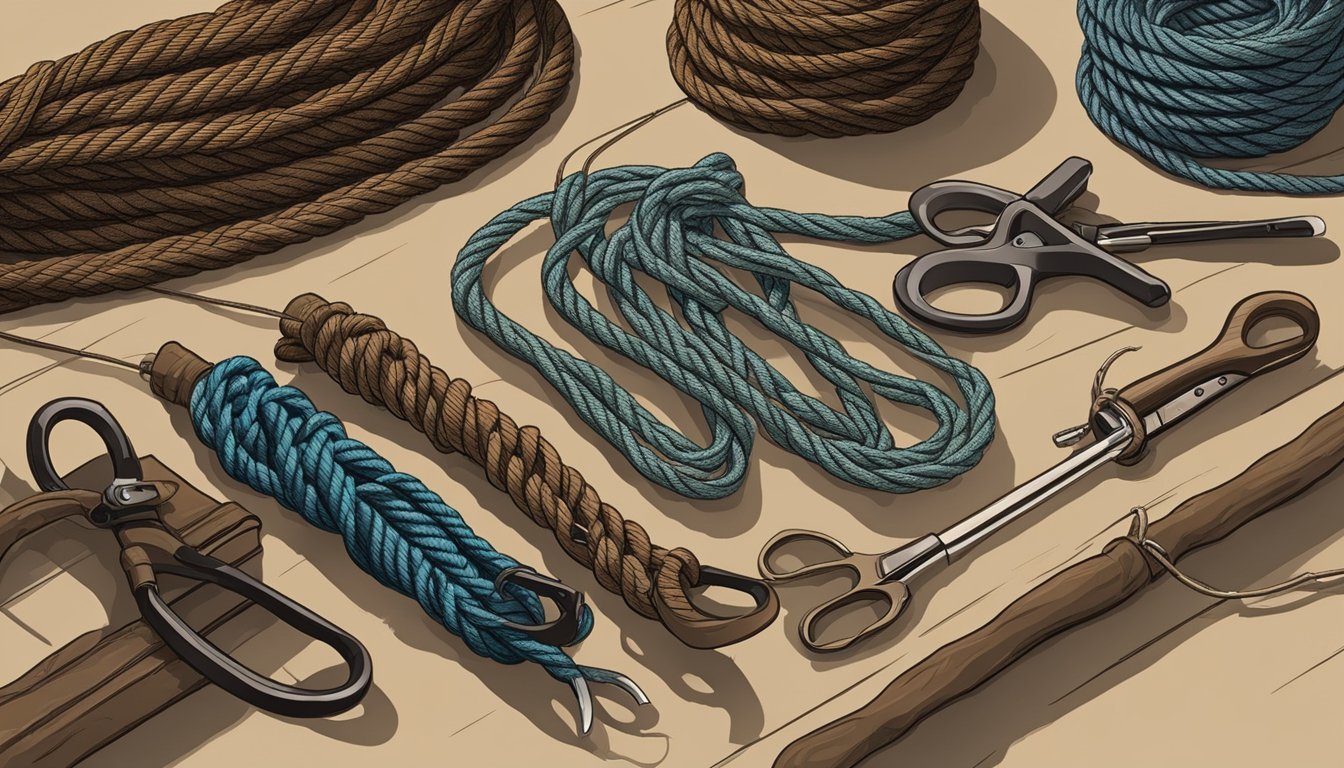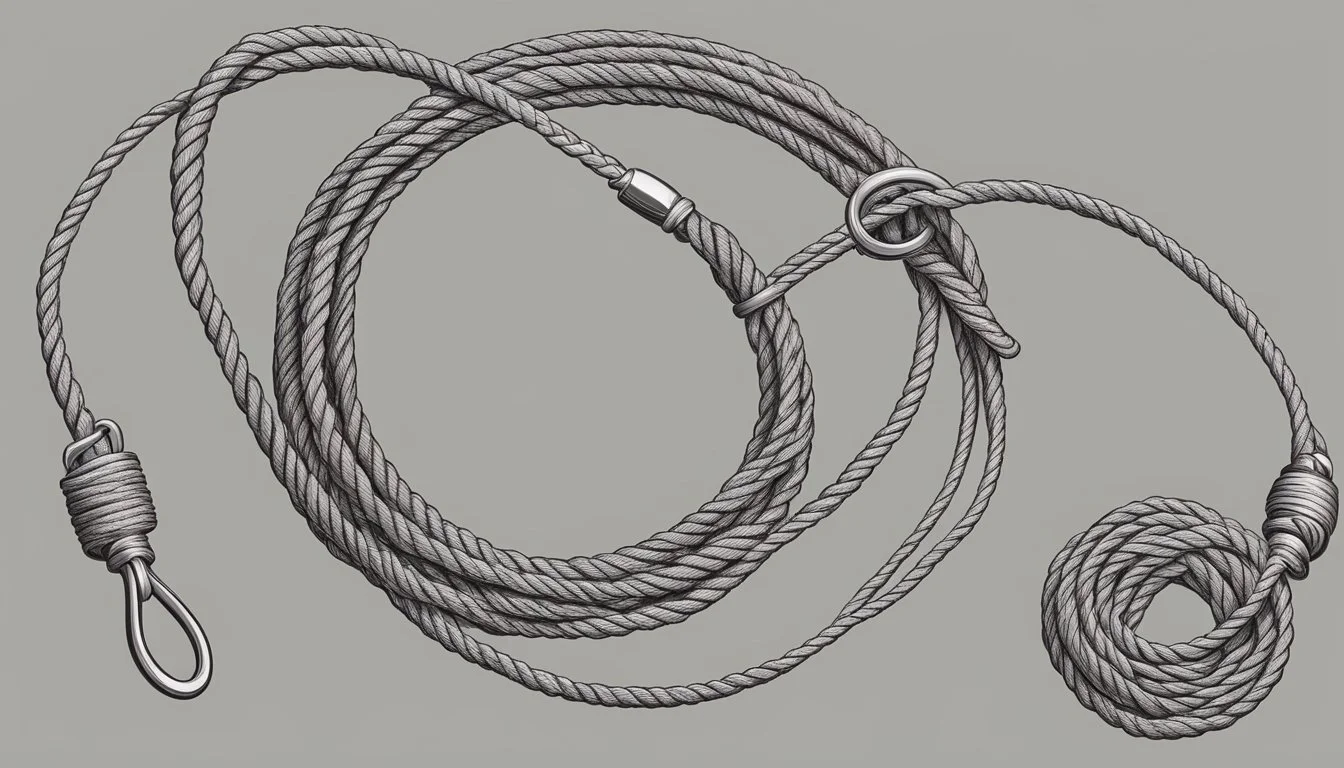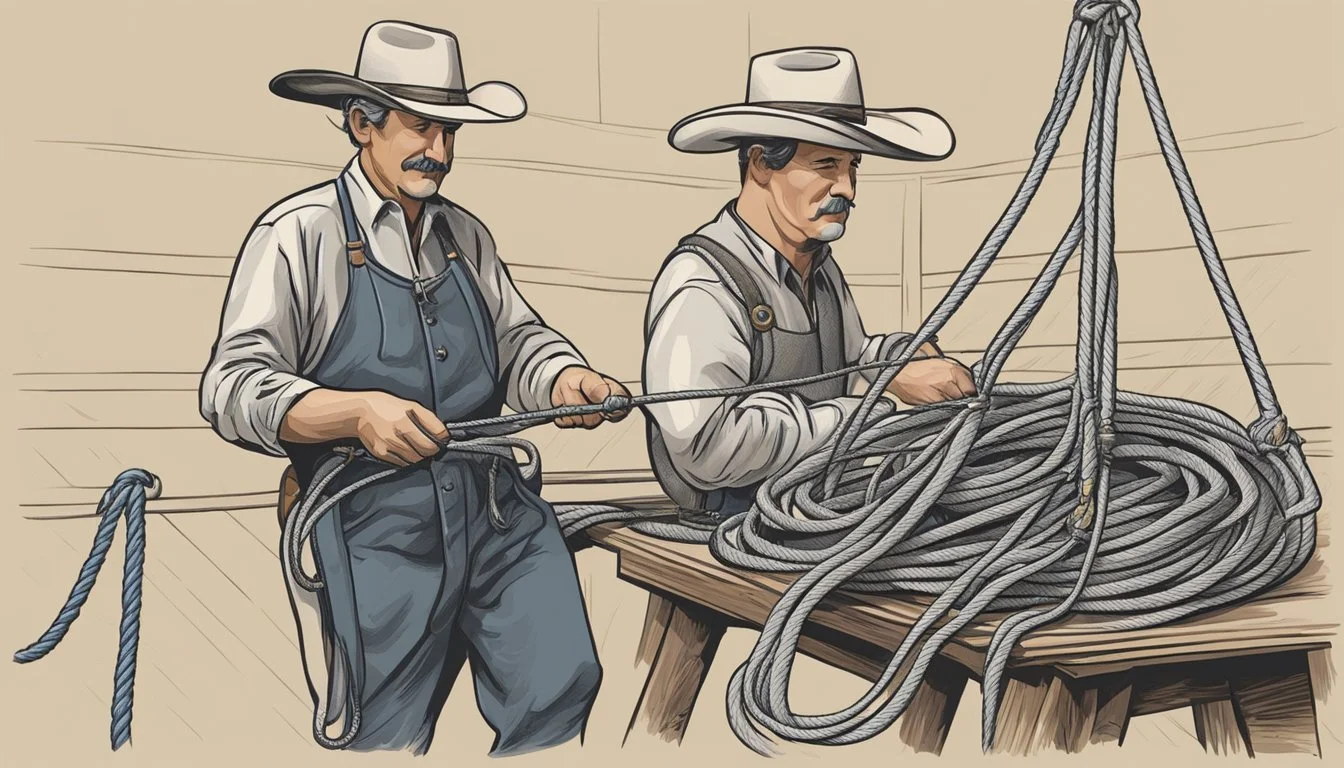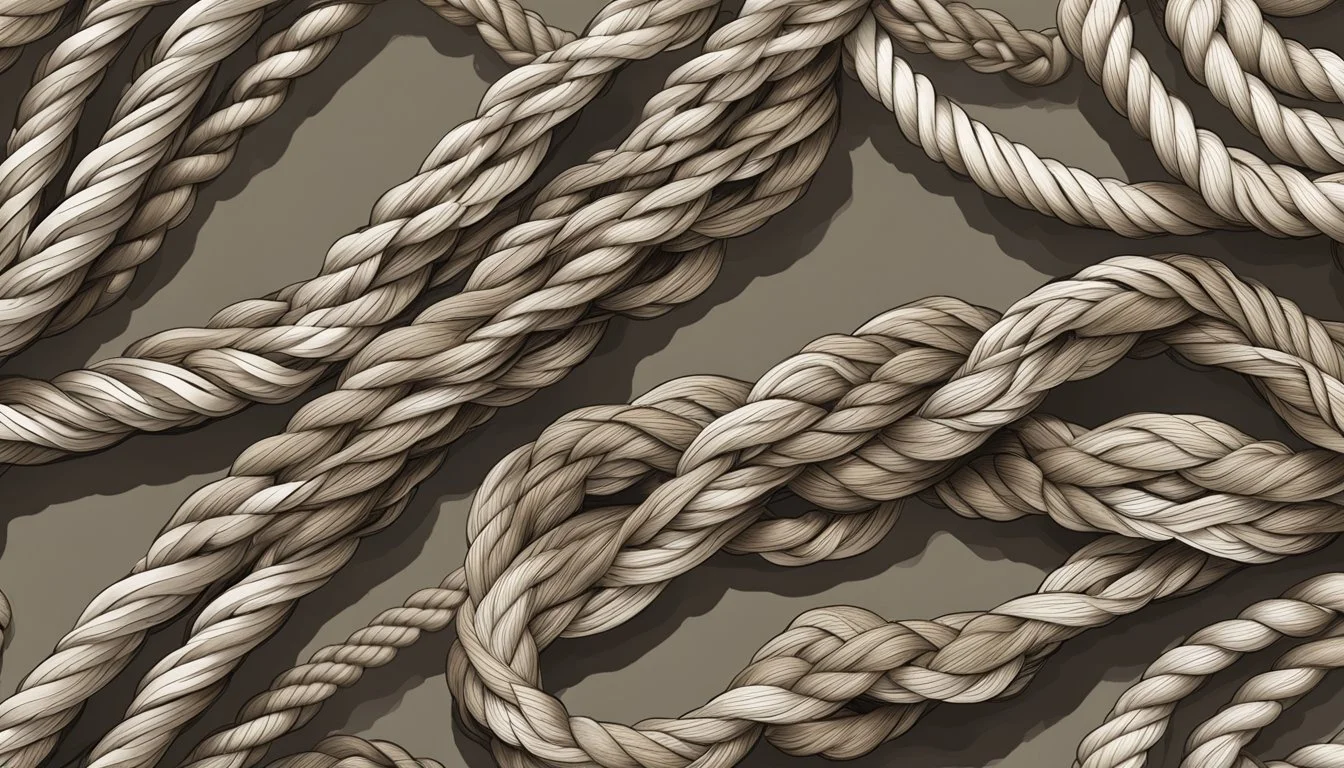The Art of Lariat Making
Exploring Varieties of Ropes and Techniques
The art of lariat making is steeped in tradition and practicality, with a focus on crafting ropes that are both durable and functional for various tasks. Known interchangeably as lariats or lassos, these ropes have been an essential tool in the cowboy’s arsenal for centuries. The process of making a lariat involves selecting the right materials and braiding techniques to create a rope that is suitable for its intended use, whether that be cattle wrangling or competitive roping events.
Over time, the materials used to make lariats have evolved to include a range of fibers, each selected for specific properties. While traditional lariats were often made from rawhide or hemp, modern ropers might choose nylon for its strength and resilience. Nylon ropes are preferred for their stiffness, which helps keep the loop steady when thrown, and for their enhanced durability. The choice of material greatly influences the rope's handling characteristics, weight, and longevity, making material selection a critical step in the lariat-making process.
Different types of ropes, such as those used for team roping or calf roping, require different characteristics in terms of flexibility, weight, and strength. High-quality ranch ropes provide the necessary durability and precision, often constructed with careful attention to detail to ensure they perform well under the pressures of ranch work and roping competitions. This specialization in rope types underscores the complexity of the art of lariat making and affirms its enduring relevance in Western culture.
Historical Significance of Lariat Making
Lariat making is a craft with deep historical roots tied to the lives of cowboys and the management of cattle. This section will explore the lariat's evolution, its cultural influences, and its role in rodeo tradition.
Evolution of the Lariat
Historically, the lariat originated as a practical tool for catching livestock. Its development was crucial for cowboys who needed an effective method for herd management. Early designs of lariats were made from rawhide or leather, materials that were readily available and durable. As the demand for lariats grew, cowboys began to seek out ropes with specific properties—mainly stiffness—ensuring the noose would remain open when thrown and allow for easier handling of cattle.
Influence of Vaqueros
The vaqueros, skilled horsemen of Mexico, were influential in refining lariat techniques and the art of roping. They brought their deep understanding of cattle behavior and roping skills to what is now the Southwestern United States. The term "lariat" is even derived from "la reata," which means rope in Spanish, demonstrating the linguistic and cultural impact vaqueros had on cowboy culture.
Development in Rodeo Culture
Rodeo culture has preserved and celebrated the art of lariat making. Rodeos, acting as a showcase for the skillful use of lariats, have highlighted the importance of the rope's design and composition. Different rodeo events have specific rope requirements, influencing the creation of varied lariats to suit each task, from calf roping to team roping. This ongoing development sustains a vibrant tradition that is both a competitive sport and a homage to the cowboy heritage.
Fundamentals of Lariat Construction
A lariat rope is a cowboy's indispensable tool, crafted to be durable and reliable. The construction of a lariat is an art that hinges on the quality of its basic components and the mastery of knots that secure its function.
Basic Components of a Lariat
The primary structure of a lariat consists of a long, sturdy rope and a small, yet crucial part called the "honda." The strength of a lariat depends on the material it's made from, with modern options typically including nylon and sometimes rawhide. Nylon is preferred for its durability and sustainability. The loop, formed at the end of the rope, is the active part of the lariat used to catch livestock and relies on the rope's stiffness to stay open when thrown.
Materials Used for Construction:
Nylon: Durable, preferred for maintaining an open loop
Rawhide: Traditional, offers a different feel and weight
Critical Parts of a Lariat:
Rope: The length, diameter, and material affect its use.
Loop: The noose that is thrown to encircle the target.
Honda: A small, eye-shaped knot that the other end of the rope passes through to form the loop.
The Role of the Honda Knot
The honda knot is integral to the functionality of the lariat. It is a type of slip-knot that forms a fixed eye at one end of the rope where the other end can pass through to create a loop. The knot’s effectiveness lies in its simplicity and security; it is designed not to slip under strain, which ensures the lariat retains its loop's shape when in use.
Knot Strength and Function:
Maintains the loop's shape
Provides a secure point for rope tension to distribute evenly
Enables quick release after a catch
Understanding these essentials of lariat construction underpins the ability to choose or craft a lariat suited for specific needs regarding strength, handling, and resilience.
Materials and Properties
Selecting the right materials for a lariat is crucial as it determines its durability, feel, and suitability for different conditions and tasks. Each material brings its distinct characteristics affecting the rope's performance.
Natural Fibers
Hemp and cotton are traditional materials for lariats due to their natural feel and grip. Hemp, especially, stands out for its long fibers, providing strength and a slight degree of natural moisture resistance. Manila rope, which is made from the fibers of the abacá plant (a type of banana), is favored for beginners as it has good tensile strength while still being gentle on the hands.
Natural fibers like sisal and agave, from which maguey lariats are made, offer a robust structure due to their coarse and tough fibers. While they tend to be stiff, these fibers provide a strong grip, which can be beneficial when handling livestock.
Leather: Often used in the construction of the handhold or honda, enhancing durability.
Horsehair: Once a common material, but less prevalent today due to its reduced strength compared to plant fibers.
Synthetic Fibers
In contrast to natural materials, synthetic fibers such as nylon and polyester offer increased durability and resistance to environmental factors like moisture and ultraviolet light. Ropes made from these materials are less prone to rot and can maintain their integrity over time.
Nylon: Known for its exceptional strength, elasticity, and longevity, nylon ropes are well-suited for rigorous tasks.
Polyester: While less elastic than nylon, it offers superior resistance to ultraviolet light and does not lose strength when wet.
Types of Lariats
In the world of roping, each type of lariat serves a specific purpose, distinguished by its material, length, and flexibility. Whether used on a ranch, in competition, or for trick roping, the right kind of rope is paramount for success.
Ranch Ropes
Ranch ropes, also known as lariat ropes, are versatile tools on a ranch, serving a variety of tasks. Ranch ropes typically have a longer length, enabling cowboys to perform tasks that require more distance, such as herding cattle. Most commonly, they are made of materials like nylon or polyester for durability and ease of use. These ropes might vary in thickness but are able to sustain the rough conditions of ranch work.
Examples of Ranch Ropes:
Material: Nylon, Polyester
Usage: General ranch work, cattle herding
Diameter: Commonly around 3/8 inch to over 1/2 inch
Length: Often exceeding 35 feet for versatility
Competition Ropes
Competition ropes are specialized for various rodeo events, including team roping and calf roping. Each of these events has specific requirements for ropes in terms of length, diameter, and stiffness. For example, a team roping competitor may choose a rope with more body to allow for easy handling by the header and heeler.
Team Roping Specifications:
Headers' Ropes: Shorter and lighter
Heelers' Ropes: Longer and heavier
Material: High-quality nylon or a blend for balance and strength
Trick Roping Ropes
Trick roping ropes differ significantly as their purpose is for performance rather than practical use. A trick roper might prefer ropes made of a stiffer material to maintain the loop's shape during complex maneuvers. Trick roping lariats are often customized in length and diameter to accommodate the roper's specific routine and style.
Trick Roping Attributes:
Material: Stiff nylon or polyester for loop shape retention
Design: Often brightly colored or decorated for visual appeal
Function: Crafted for precision during intricate tricks and routines
Selecting the Right Lariat
Choosing the right lariat is crucial for both efficiency and safety in various roping activities. The selection process must consider the rope’s strength, handling characteristics, and alignment with the roper's preferences and intended use.
Strength and Durability
A lariat's strength is fundamental to ensure it can withstand the stress of catching and holding livestock. Durability likewise is essential, as the rope must resist wear and tear from rough surfaces and weather conditions. Materials like nylon offer high tensile strength and abrasion resistance, while polypropylene blends afford lightweight durability, which can be preferable in certain conditions.
Action and Handling
Action refers to how a rope behaves during the throw and tightening around the target, while handling denotes the ease of rope control by the roper. Ropes with good action allow for smooth throws and reliable loops, and ones with favorable handling are responsive and maintain stiffness, crucial for precision. A lariat with balanced action and handling will assist the roper in accurate and effective throws.
Personal Preference and Uses
Ropers should account for personal preference in terms of rope weight and feel, as these factors significantly impact their performance. The specific needs of the task at hand also dictate the choice; for instance, shorter, lighter ropes may be preferred for calf roping, whereas longer and heavier ropes could be favored for adult cattle. A roper's level of experience can influence preference, with beginners potentially opting for more forgiving ropes.
Roping Techniques and Knots
In the realm of lariat crafting, proficiency in roping techniques and securing reliable knots distinguishes a novice from an expert. Understanding how to manipulate a loop of rope and tie knots like the honda knot can significantly impact the success in catching and securing targets.
Loop of Rope Techniques
Adept handling of the loop of rope is vital in lariat use. Key to this is the honda knot, which forms a secure and adjustable loop that can be easily thrown and tightened around a target. The technique involves:
Creating a Loop: This is the foundation of the lasso, where one end of the rope is formed into a circular shape.
Adjusting the Size: The loop must be adjustable, allowing it to be expanded or contracted according to the size of the target.
By mastering the loop, a cowboy ensures that they can maneuver the lasso with precision, effectively catching their target with a fluid motion.
Tying Secure Knots
The honda knot serves as the core of tying secure knots in lariat making. This specific knot provides a durable and reliable loop that is essential for successful usage. The steps to tie the honda knot include:
Form a loose overhand knot.
Pass the end of the rope through the loop.
Adjust to ensure the knot is secure yet allows the loop to move.
This knot ensures the lariat remains intact and functional throughout the process of catching and securing. Its reliability makes it a fundamental skill for cowboys and rodeo athletes alike.
Care and Maintenance of Ropes
Maintaining lariat ropes involves rigorous cleaning and proper storage to ensure their longevity and consistent performance. Care practices are a vital aspect of rope usage, directly influencing durability and functionality.
Cleaning and Storage
Cleaning:
Dirt Removal: Lariats should be cleaned whenever they accumulate dirt. It is advisable to wash them in cold water with a mild soap to avoid damage.
Rinsing: Post washing, thoroughly rinse the ropes with cold water to remove all soap residue.
Drying: Ropes must be air-dried away from direct sunlight and heat sources; this preserves the material's integrity.
Storage:
Dry Before Storing: Ensure that the rope is completely dry before coiling it for storage to prevent mildew and rot.
Coiling: A neat coil prevents kinks and maintains rope consistency.
Environment: Store in a cool, dry place to maintain rope quality.
Longevity and Performance
Material Considerations:
Hemp: Tends to be a preferred material due to its durability and performance. High-quality long fiber hemp is notable for its strength.
Synthetics: Synthetic blends offer varying characteristics that can impact the rope's feel and durability.
Usage and Care:
Regular Inspection: Frequent checks help in identifying wear and ensuring safety.
Avoid Excessive Sunlight: Prolonged exposure to sunlight can degrade the rope's material.
Proper Handling: Correct usage and avoiding unnecessary stress prolongs rope life and ensures optimal performance.
By adhering to these focused care guidelines, one can maintain their ropes effectively, aligning with the principles of affordability and durability.
Cultural Impact and Modern Usage
The art of lariat making and the intricacies of various ropes are deeply entrenched in the cultural fabric of rodeo sports and entertainment. This craft not only sustains traditional practices but also adapts to the evolving demands of modern usage.
Roping in Contemporary Rodeo
Rodeo events remain a testament to the cultural significance of lariat making, where the relationship between the rider and their rope is pivotal. In contemporary rodeo, each competition sees cowboys showcasing their proficiency with lariats in events like tie-down roping and team roping. These competitions are as much a test of the rider's skill as they are a measure of the rope’s performance. The rope must be:
Durable and flexible
Appropriately weighted for a swift throw
Sufficient in length to allow for a successful catch.
Craftsmen who create ropes understand the balance needed between strength and subtlety, as a slight imperfection could be the difference between a win and a loss during a high stakes rodeo.
The Art Form of Rope Tricks
Rope tricks have transcended their utilitarian roots in livestock management to become an artistic expression that often steal the show in rodeo exhibitions. Trick roping is a performance art where ropers execute a series of intricate loops and spins, each maneuver requiring a specific type of rope. Notable rope tricks include:
The Flat Loop: A smooth horizontal circle created by swinging the rope parallel to the ground.
The Vertical Loop: An upright spinning loop that tests the dexterity of the performer.
Trick roping ropes are selected for their:
Visibility to attendees
Ability to hold shapes well
Light weight for ease of manipulation
For the performers, the journey from a simple throw to a complex trick demands countless hours of dedication and intimate knowledge of their chosen ropes. In reflecting the heritage and evolving nature of the sport, both trick roping and rodeo competitions ensure the sustainability of this unique craft in modern times.
Conclusion
Lariat making is an intricate craft that requires a patient approach and a deep understanding of the material's properties. A working ranch often opts for lariat ropes that provide durability, optimal weight, and resistance to varied weather conditions.
Materials:
Nylon: Preferred for its durability and stiffness, aiding in keeping the loop open during a throw.
Polypropylene: Valued for its similarities to nylon, yet offering a lighter weight.
Hemp: Traditionally favored for its strength, though less common in modern times.
The choice of rope material impacts the performance and longevity of a lariat. Cowboys and rodeo athletes carefully select their ropes, considering factors such as the terrain of the ranch and the specific task at hand.
Considerations:
Abrasion Resistance
Weight and Handling
Environmental Resistance
Rope care is essential to maintain functionality. Regular inspection, cleaning, and proper storage extend a rope's life span, ensuring that it remains a reliable tool.
In summary, the art of lariat making is a crucial element in the efficiency of ranch operations. Rope selection and maintenance are not just about preference; they can directly influence the success of day-to-day tasks on the ranch. An informed decision in this regard highlights a deep connection between the cowboy and their tools of the trade.






